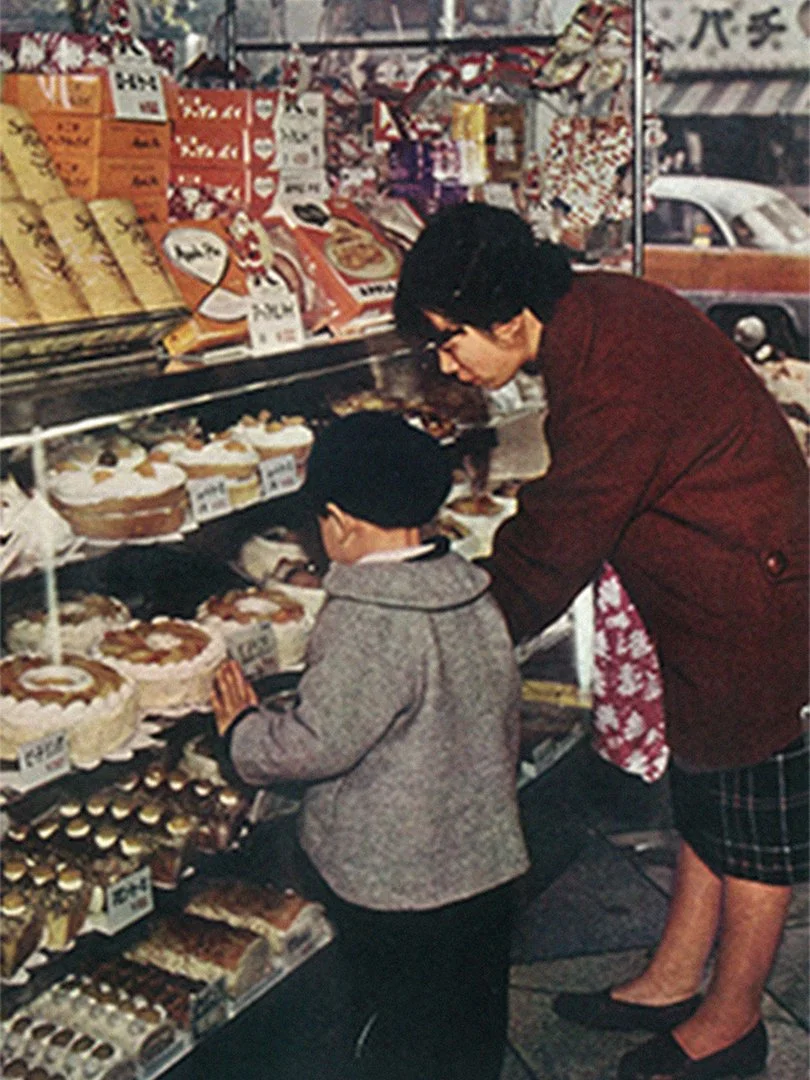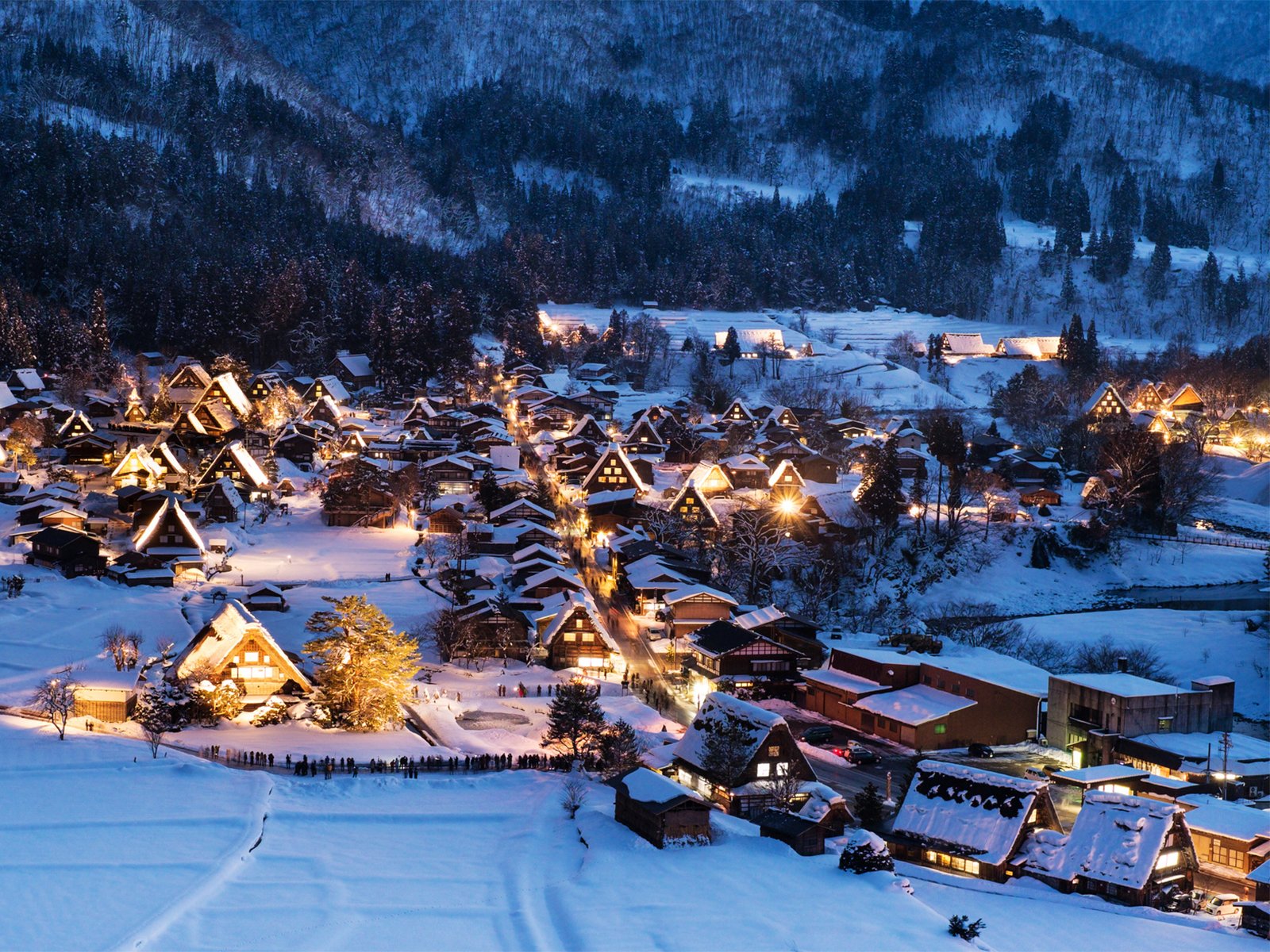Japan's Christmas Strawberry Shortcake

How a cake offers a glimpse into globalization, prosperity, and the future.
Cover photo: A decadent strawberry Christmas Cake offered by the Western confectionery store Fujiya (circa 2021). By an unidentified photographer and via Hahaoya-Gyo.
FULL TRANSCRIPT BELOW
Intro
In Japan, Christmas cake is synonymous with strawberry shortcake, a light and fluffy confection with alternating layers of soft sponge and delicate whipped cream, topped with perfectly sweet fresh strawberries.
After fried chicken, Christmas cake is the most popular food consumed during Japan’s yuletide season. In 1997, strawberry shortcake was immortalized by the Japanese software company SoftBank in what is arguably the world’s first set of emoji (“image characters”).
Today, the cost of an entire Christmas cake ranges from 4000 yen ($36) to 9600 yen ($88) but I was lucky to find a slice at my local supermarket for just a couple dollars.
Fujii’s Yogashi
The concept of Christmas cake was first introduced to Japan in 1910, by Rin’emon Fujii, at his brand new European-inspired pastry shop Fujiya, in Yokohama, as “a rich, liqueur-soaked fruitcake”.
“[I]n those early days [of the 20th century] Christmas in Japan was a holiday for adults, an excuse to hold stylish parties,” explains author Kenichiro Horri. This was not an event for children.
Tokyo area’s largest port city, Yokohama was a center for international trade. Foreign chefs were encouraged to share their cuisine with locals. As a young apprentice, Fujii had been eager to learn. In 1912, Fujii traveled to the United States, and spent a year in Los Angeles. It was there that he fell in love with shortcake.
The name shortcake refers to “shortening” or fat, which is used in pastries to create a delicate and crumbly texture. The cake originated in Britain, dating at least as far back as 1588, but it was perfected in America with chemical leavening, which made the cake lighter and fluffier than the British predecessor.
Upon his return to Japan, Fujii developed his own version, which was better suited to the local palate, with layers of soft sponge reminiscent of wagashi (traditional Japanese sweets). As the fresh fruit was unavailable in winter, Fujii’s Christmas shortcake was decorated with candied strawberries. In the auspicious colors of red and white, the cake evoked the national flag.
In addition to creme puffs and éclairs, Fujii began selling his shortcakes in 1922. That year he opened a new Fujiya location in Isezakicho, and one in Ginza the next year.
Customers included university students, as well as famous kabuki and film actors. However, it wasn’t until the U.S. occupation that the general public truly developed a taste for yogashi (a term for Western sweets coined in the 1870s).
World War II
Japan joined World War II in September of 1940, entering into an alliance with Germany and Italy. Japan attacked the United States naval base at Pearl Harbor less than a year later, causing the neutral nation to enter the war.
American customs were deemed unpatriotic and in 1942, prompted by shortages, the Japanese government rationed food items such as salt, oil, and sugar. This was the end of yogashi.
Then in 1945, two atomic bombs were dropped by the United States — the only nation to ever deploy the weapon — on Japan, in Hiroshima and Nagasaki, killing an estimated 200,000 people.
Emperor Hirohito surrendered and U.S. forces occupied Japan for the next six years in order to ensure the disarmament and rehabilitation of the country.
Christmas & Prosperity
During the American occupation, Christmas, and all its sugary treats, became a coveted image of abundance. Parades took place in Tokyo, as can be seen in photos by U.S. Officer Emery D. Middleton. Still today, people recall soldiers passing out gum, chocolate, and ice cream.
When the Japanese economy finally improved, and living standards rose, strawberry shortcake became a symbol of prosperity, one which could be safely kept in newly available consumer appliances like refrigerators, which were first sold in 1953.
Amid severe labor shortages, Japanese companies desperate to attract and retain workers introduced a lifetime employment system in 1955. These salarymen — and yes, they were men — suffered demanding days, working as much as sixty hours a week by 1960.
Around 1963, Fujiya began to market Christmas as a family occasion. Columnist Asato Izumi translates the campaign’s slogan as “Dad, come home early!” That Christmas, Fujiya sold approximately 280,000 cakes in just two days, and throughout December, shops across Tokyo sold a collective 2.5 million Christmas cakes.
Strawberries & Agriculture
Strawberries were introduced to Japan by Dutch merchants in the early 19th century and cultivation finally began in the 1880s. Nevertheless, strawberries remained rare and expensive until after WWII.
Agricultural advances, like the adoption of greenhouses and the development of polyvinyl chloride film for low tunnel production, made the fruit accessible for the general public and even available in winter.
“For me, growing up as a kid, I would only have strawberries on special occasions,” recalls Hiroki Koga, the co-founder and CEO of Oishii Berry, a vertical farming startup based in the United States. He refers to strawberries as “the holy grail” of vertical farming.
Small-scale vertical farms have been operating in Japan since the 1970s, but strawberries have remained elusive. Just recently, in May of 2021, the Japanese agricultural technology company Spread Co. announced that it had succeeded in producing strawberries in vertical farms.
Emeritus professor of Public and Environmental Health at Columbia University, Dickson Despommier argues, “If we don’t do something soon to reduce the rate of climate change, vertical farming may be our last hope of getting food on the table for all those who live in cities.”
Not only is the strawberry shortcake a symbol of modern prosperity, but it may be an omen for a future of continued technological advancement and global cooperation.















